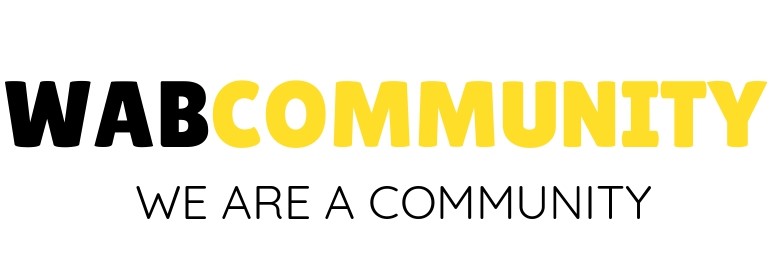VMware is a software company based in Palo Alto, California,
and cloud computing. VMware is part of Dell Technologies founded in 1998.
VMware was acquired by EMC Corporation in 2004; EMC was finally acquired by
Dell Technologies in 2016. VMware’s virtualization solutions are based on ESX /
ESXi bare-metal hypervisor in x86 architecture.
The hypervisor is installed on a virtual server using VMware
server virtualization to allow multiple virtual machines (VMs) to run on the
same virtual server. Each virtual machine (VM) can run its operating system
(OS), which allows multiple OS to run on a single virtual server.
On the same virtual server, all VMs share resources such as
network and RAM. The VMware hypervisor received support in 2019 for running
content containers in the Kubernetes collection in the same way. These
workloads can be handled in the same way as virtual machines, and DevOps teams
can use containers in the same way as they did in the past.
VMware was founded in 1999 by Diane Greene, Scott Devine,
Mendel Rosenblum, Edward Wang, and Edouard Bunion. Its first invention, VMware Workplace,
was released in 1999. VMware ESX, the company's second product, was released in
2001.
VMware products
Virtualization, network management and security tools, software-defined
data center software, and end-to-end software are among the offerings of
VMware. Find their products at a discounted price using the VMware coupon code
during the exit process.
VMware vSphere is a virtualization company. VMware vSphere,
formerly known as VMware Infrastructure, contains the following features:
The most recent version is vSphere 6.7, available in three
versions: Standard, Enterprise Plus, and Platinum, from April 2018. VSphere
Essentials and Essentials Plus, two bundles of three servers aimed at small and
medium-sized organizations, too, Available.
Customers can use the vSphere host with vSAN and NSX in the
Amazon database and run their business while still managing them with their
standard VMware tools and capabilities with VMware Cloud in AWS.
Communication and security
When VMware acquired Nicera in 2012, they launched the VMware
NSX, providing communication and security software. NSX allows administrators
to make network objects realistically, allowing them to build, operate, and
manage visual networks and switches using software instead of computer
hardware. The controller can split a virtual network into multiple virtual
networks using a software layer that resides on a hypervisor.
Network virtualization can now be applied to both ESXi and
KVM hypervisors, as well as non-metal servers, with the latest product
duplication, NSX-T Data Center. In the Kubernetes collection, loads of work
placed in a container may be visible and secure. Network Function
Virtualization, which allows functions such as firewall, load balancing, and
VPN to be used in the virtualization software stack, is also available with the
NSX-T Data Center.
The VMware vRealize Network Insight tool is a network
performance management tool that allows administrators to design
micro-segmentation and monitor the life of the VMware NSX. VRealize Network
Insight is based on the technology acquired by Arkin by VMware in 2016. NSX
Manager provides data for VRealize Network Insight. It also shows errors on the
user interface, which helps with NSX troubleshooting.
SDDC (Software-Based Data
Center)
With SDDC Manager, VMware Cloud Foundation is an integrated
software platform that combines vSphere, VMware vSAN, and VMware NSX into one
platform. Bulk can be installed as a private cloud on the premises or as a
service on public clouds. Without having to wait for network or storage, the
administrator can apply right now.
Availability and storage
VMware vSAN is a software-based backup technology installed
in the ESXi hypervisor and connected to vSphere that integrates disk space from
a few ESXi players and provides them with smart policies that include security
limits, minimal allocations, and code clearing. It works in conjunction with
vSphere High Availability to maximize computer availability and storage
availability.
VMware Site Recovery Manager (SRM) is a disaster recovery
management tool that allows administrators to design automatic recovery
programs in the event of a system crash. Managers can use Site Recovery Manager
to automatically manage VM failover and failures. SRM also works with NSX to
maintain network and security policies on virtual machines transmitted
virtually.
The VMware vCloud NFV platform is a network of network
services that allow the service provider to use network functions as virtual
reality applications from a variety of vendors. The once-trusted telecommunications
service provider can now benefit from the visibility and benefits of the NFV
cloud.
Cloud management forum
VRealize Suite is a collection of mixed cloud management and
management tools. VRealize Operations Monitoring, vRealize Log Insight, one-way
vRealize Automation Data Center automation, and vRealize Business for Cloud
Cost Management
are all integrated into vRealize Suite.
The controller can use this batch to install and manage
visual effects on all multiple hypervisors or cloud platforms from a single
control panel. VMware Tanzu, released in 2019, empowers customers to create
container-based applications, run Kubernetes business, and manage Kubernetes for developers and IT.
Visible desktop
infrastructure
VMware Horizon enables businesses to use Windows desktops
locally or VMware Cloud on AWS. This eliminates the need for all desktops to be
installed and managed in the office and includes management and security of
userspace. Works with VMware's App Volumes and Dynamic Environment Manager to
provide applications and manage
Windows desktops.



.png)
.jpg)
%20(1).jpeg)
0 Comments